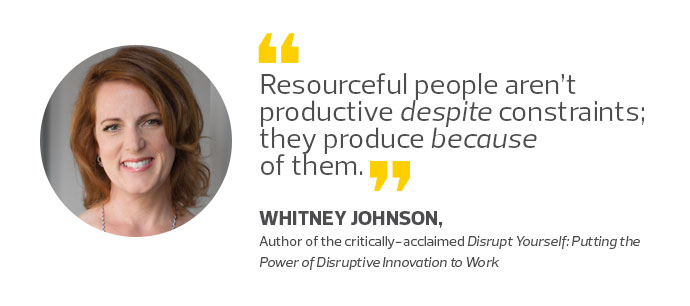SMB Tech Teams Should Use Disruptive Innovation to Their Advantage
Think for a moment about the Oscar-winning motion picture Jaws.
Did you know that some of the most iconic scenes came about because the mechanical shark Steven Spielberg wanted to use didn’t work?
Over budget and behind schedule, Spielberg finally decided to shoot the scenes from the shark’s point of view and let John Williams’s iconic music and the audience’s imagination do the rest.
One wonders: Was Spielberg successful in spite of, or because of, his constraints?
IT in small and medium-sized businesses often faces a similar quandary. You instinctively know that the best place for a business to rise to the top is at the constraint-bounded, low end of the market. Gain a foothold there, accept the demand for creative thinking that those constraints require, and you will be prepared to disrupt the less hungry, less aggressive, comfortably snoozing giants in your field.
But, day to day, how exactly do you turn these constraints to your advantage and see them as an opportunity to thrive?
Take on Multiple Roles
When employee numbers are small, it is typical for everyone to wear multiple hats. Certainly, there are days when it would be nice to have just a single focus.
But when the CEO is also the chief financial officer, or human resources is juggled in tandem with IT, people may feel overextended — especially when the work involves multiple disciplines, with mixed bottom-line responsibilities.
But they are also able to dodge two of the greatest difficulties of the large corporation: Wasteful bureaucracy and red tape can be minimized or avoided altogether. The silos that develop in bigger companies, with their accompanying inefficiencies of territorialism and communication breakdown, are eradicated.
Develop a Wide Skill Set
This sort of lean-and-mean organization can be a rapid problem-solver.
It can also have a great esprit de corps: Fielding one team to take on the competition, rather than multiple teams that are really competing with each other, to the detriment of the whole.

But IT has another challenge beyond numbers of bodies — and that is the challenge of skill set.
Address this issue by stretching the human resources at hand through collaboration, exploiting strengths wherever they exist to compensate for the inevitable weaknesses.
For example, can your project manager pinch hit on some of the more routine IT issues, leaving your expert free for the more complex ones? Commit to ongoing education and employee development, even when additional hiring becomes feasible.
Plan Based On a Tiny Budget
It is rare for anyone to feel there is too much money, and small businesses may especially struggle with variable and limited revenue.
One of the exercises I advocate is this: Imagine you have only half your present budget. What would you do differently? Start with this incredibly small budget and build your strategy accordingly. You will be forced to be more creative, which is an excellent problem to have.
Resourceful people aren’t productive despite constraints; they produce because of them. They are adaptable, hard-working, smart, nimble in crisis and, of course, innovative. Necessity is the mother of invention; small companies — and yours may be next — are necessarily some of the great innovators and most successful industry disrupters on the planet.









